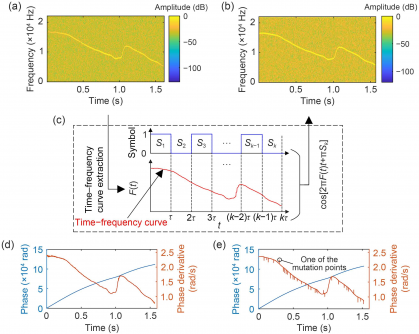BREAKING NEWS: Researchers have just unveiled a groundbreaking method for recognizing underwater communication signals that mimic the whistles of dolphins. This innovative approach is set to revolutionize maritime military communications by overcoming significant limitations faced by traditional technologies.
In a pivotal study published by a team from the State Key Lab of Precision Measuring Technology and Instruments at Tianjin University and the Shenyang Institute of Automation, Chinese Academy of Sciences, the new recognition method employs a convolutional neural network (CNN) to accurately identify covert signals. This development comes amidst increasing demand for sophisticated underwater communication solutions, particularly in military applications.
Current signal recognition methods struggle with underwater bionic camouflage covert communication (UBCCC) due to the challenges posed by natural ambient noise. Traditional signals, while designed for low probability of interception, are often misclassified as background noise. The new approach specifically addresses the unique characteristics of UBCCC signals, which closely mimic marine mammal calls, allowing for greater concealment and deception.
The method involves three critical steps:
1. **Spatial Diversity Combining (SDC)**: This technique enhances primary signal paths while suppressing multipath interference, improving overall signal clarity.
2. **Time-Frequency Spectrum (TFS) Mask Filtering**: By converting the TFS into a 2D image, the researchers can more effectively filter out noise and extract relevant whistle signals.
3. **Phase Derivative Spectrum and CNN Recognition**: Utilizing the Hilbert transform, the team captures the phase of the extracted signals, generating a scalogram image for input into the CNN, achieving a remarkable recognition accuracy.
Through extensive simulations, the researchers reported a recognition accuracy of 90% under multipath conditions at a signal-to-noise ratio (SNR) of 0 dB. Real-world tests in Qingnian Lake, Tianjin, demonstrated an 81% recognition accuracy over a distance of 150 m and an SNR of 6.36 dB, highlighting the method’s effectiveness even in complex underwater environments.
This research represents a significant leap forward in underwater acoustic communication technology, enhancing military and potentially civilian applications. The method’s ability to accurately discern signals in noisy conditions could lead to safer and more reliable underwater operations.
As the technology evolves, the implications for maritime security and communication are profound, promising enhanced capabilities in increasingly challenging environments. The study titled “Recognition method for underwater communication signals that mimic dolphin whistles using phase-shifting modulation” is authored by Qingwang YAO, Jiajia JIANG, Xiaolong YU, Zhuochen LI, Xiaozong HOU, Xiao FU, and Fajie DUAN.
For the full text of the paper, click here: Recognition Method for Underwater Communication. Stay tuned for more updates as this story develops!






